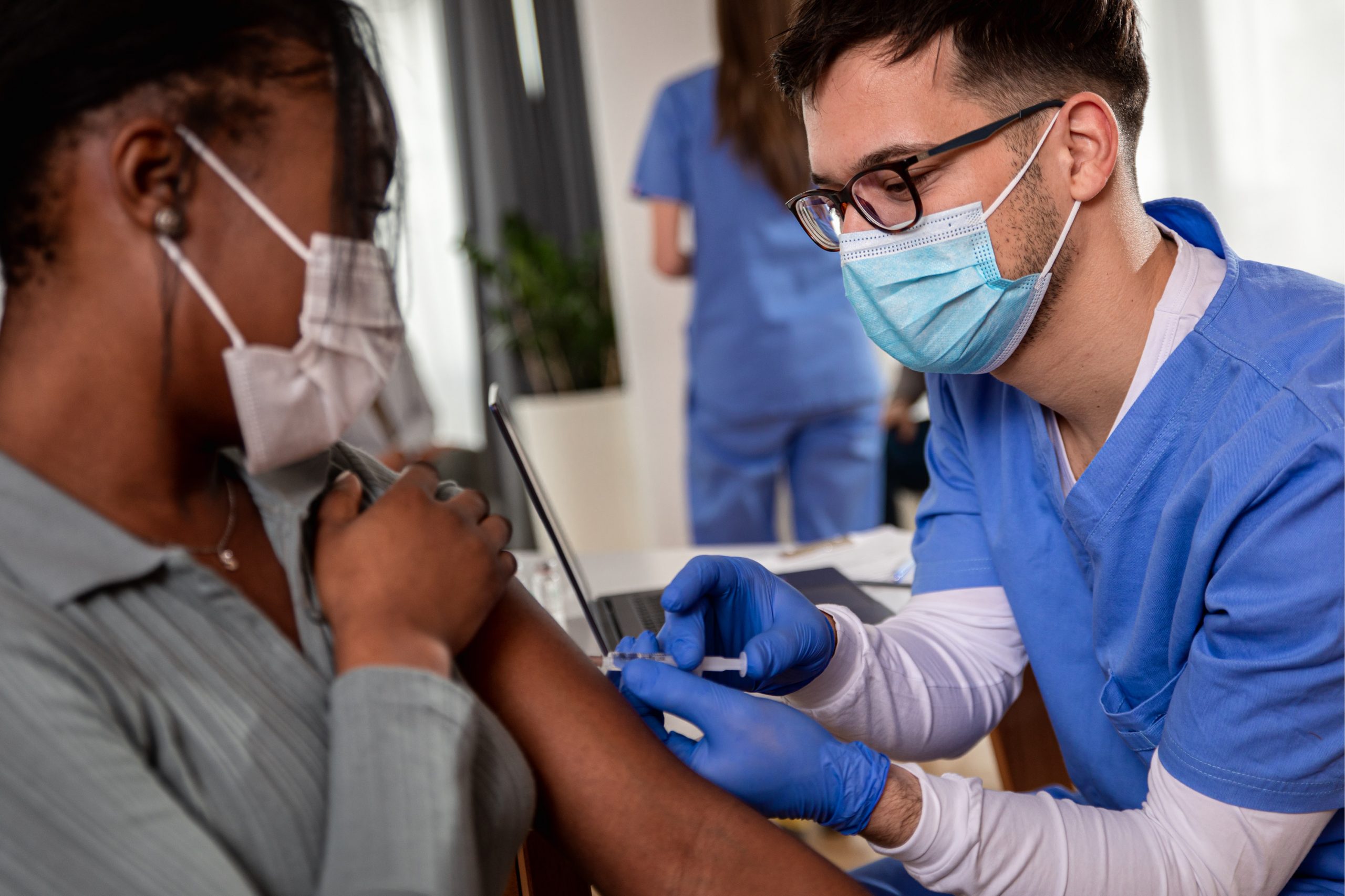
Titering is commonly used by veterinarians when deciding whether to revaccinate or give a “booster” vaccination to dogs or cats. Titering is a way to measure the concentration of antibodies in a patient’s blood. The process of titering to determine the appropriateness of revaccinating companion animals is partially driven by the concerns of owners about over-vaccination, and the perceived health implications to the animal, and to a lesser extent, the costs of administering vaccinations. In humans, vaccine hesitancy can jeopordize immunization programs and health. Titering patient antibodies prior to “booster” vaccinations with the Covid vaccine may be a way to improve confidence and increase uptake. Read more…

Titering is a fairly common practice performed by veterinarians when deciding whether to revaccinate or give a “booster” vaccination to dogs or cats. Titering is a way to measure the concentration of antibodies in a patient’s blood. An assay that sequentially dilutes the sample, typically an ELISA, is used to quantify the number of antibodies that are present. The process of titering to determine the appropriateness of revaccinating companion animals is partially driven by the concerns of owners about over-vaccination, and the perceived health implications to the animal, and to a lesser extent, the costs of administering vaccinations if unnecessary. The effectiveness of the Covid-19 vaccination program is threatened by vaccine hesitancy and reluctance to take up booster vaccinations in some human populations. Titering of human patient antibodies prior to “booster” vaccinations with the Covid vaccine may be a method to reassure patients they are scheduled to receive the revaccination appropriate to their immune status.
Initial vaccinations prime the immune system to produce antigen-specific antibodies. These neutralizing antibodies circulate the organism and provide the initial defense against a pathogen, blocking infection by “mopping” up infective agents. The process of vaccination also primes plasma cells and T lymphocytes to provide long-term immune “memory cells”. Subsequent vaccinations “boost” the initial response. Upon meeting the antigen again, affinity maturation via somatic hypermutation (SHM) improves the quality and magnitude of the antigen-specific antibody response, creating a long-term defense to re-exposure to the pathogen.
The effectiveness of a vaccine to generate immunity is impacted by many factors such as genetics, sex, comorbidities, resident microbiome, and age of the target population, behavioral factors such as diet, smoking, or alcohol consumption, (Zimmermann and Curtis (2019)). Vaccine developers and practitioners coordinating administration try to understand these variables and their impact on vaccine design to modify vaccination schedules to improve vaccine immunogenicity and efficacy.
There are a number of methods used to quantify vaccine responses, the most common being measuring geometric mean antibody titers (GMTs) – titering. However, assays measuring seroconversion rates (SCRs), seroprotection rates (SPRs), functional antibodies (by flow cytometric opsonophagocytosis assays), antibody avidity, B and T cell activation, lymphoproliferation, and cytokine responses are also used (Zimmerman & Curtis (2019)).
The process of titering may allow practitioners to evaluate the longevity of immunity offered by vaccination and coincide a “booster shot” with declining titers to enhance immunity if waning titers are observed. Effective antibody titer is likely to vary between individuals and be influenced by the factors that impact the effectiveness of a vaccine to produce immunity. Prior to the pandemic, there was little data to coordinate the correlation between the titer and predicted immunity (Burns 2016).
However, it is known that the interval between prime and booster vaccinations may significantly affect the short- and long-term immune response (Pettini et al; 2021). Work by Khoury et al (2021) has examined the impact of waning neutralizing antibody titer and vaccine effectiveness. Although titering is only one method of quantitating immunity, there is a link between diminishing titers and reduced immunity. Surveillance by titering offers some indication of when immunity is falling and can guide practitioners when the administration of a booster vaccination may be necessary.
Jackson ImmunoResearch secondary antibodies and allied reagents can be used to generate highly sensitive assays for titering whether your patients are human or animal. For more information on products for human serology testing please see here.
References:
Katie Burns. (2016). To titer or to revaccinate. Published on June 15, 2016, https://www.avma.org/javma-news/2016-07-01/titer-or-revaccinate
Khoury, D.S., Cromer, D., Reynaldi, A. et al. Neutralizing antibody levels are highly predictive of immune protection from symptomatic SARS-CoV-2 infection. Nat Med 27, 1205–1211 (2021). https://doi.org/10.1038/s41591-021-01377-8
Pettini E, Pastore G, Fiorino F, Medaglini D, Ciabattini A. Short or Long Interval between Priming and Boosting: Does It Impact on the Vaccine Immunogenicity?. Vaccines (Basel). 2021;9(3):289. Published 2021 Mar 20. doi:10.3390/vaccines9030289
Zimmermann, P., & Curtis, N. (2019). Factors That Influence the Immune Response to Vaccination. Clinical microbiology reviews, 32(2), e00084-18. https://doi.org/10.1128/CMR.00084-18

| Learn more: | Do more: |
|---|---|
| Colorimetric western blotting | Spectra Viewer |
| Chemiluminescence western blotting | Antibodies for signal enhancement |
| Fluorescent western blotting | |


